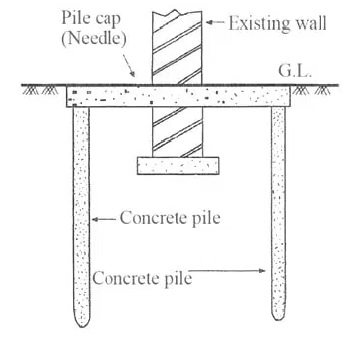Underpinning is a procedure used to repair, strengthen, or increase the depth of an existing foundation by lowering the footing to permit it to rest on more supportive soil.
In this technique, a new foundation is built under the old foundation, or the old foundation is repaired.
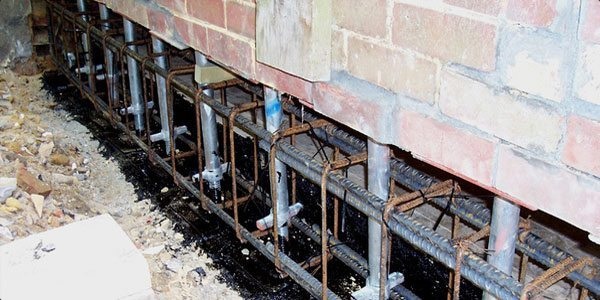
Table of Contents
Methods of Underpinning
- Pit Method
- Cantilever needle beam method
- Pier and beam underpinning method
- Mini piled underpinning
- Pile method
The description of the above-mentioned underpinning methods is as follows.
1. Pit Method:
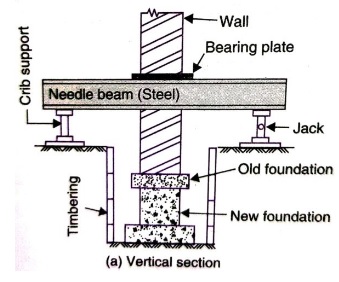
In the pit method, the entire length of the foundation is divided into small sections of length 1.2 meters to 1.5 meters. A single section is considered for underpinning at one time for safety purposes.
To start with, holes are cut in the divider over the ground level at basic intervals and solid needles are then embedded through the openings to convey the whole heap of the structure. Normally, the needles are made of timber beams or steel joists.
Bearing plates are placed above the needle to support the masonry above it. The supporting arrangement of the needle is made by crib supports (wooden blocks) on both sides of the wall and screw jacks.
Bearing plates are put over the needle to support the masonry above it. The supporting course of action of the needle is made by crib underpins (wooden squares) on the two sides of the divider and screw jacks.
2. Cantilever Needle Beam method:
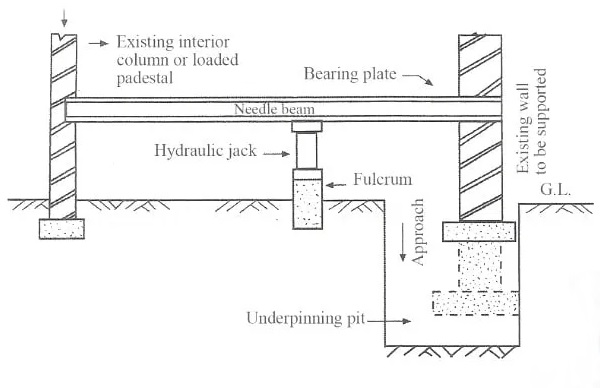
The cantilever needle beam method indicates the arrangement of the cantilever pit method of underpinning, which is an extension of the pit method. If the foundation has to be extended only to one side and the plan possesses a stronger internal column, this technique is very useful for underpinning.
3. Pier and Beam Underpinning Method:
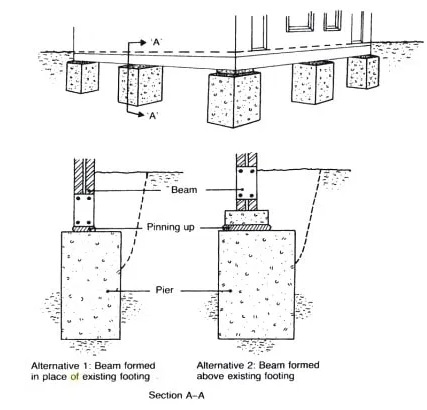
Pier and beam method also known as the base and beam method was implemented in 1946. This method is widely accepted due to the mass concrete method that couldn’t work well for a large depth of foundation.
This method is suitable for most ground conditions. Here reinforced concrete beams are placed to transfer the load to mass concrete bases or piers as shown in the above image.
The size and depth of the beams depend on the ground situations and applied loads. It is found economical for depth shallower than 6 meters.
4. Mini Piled Underpinning:
Mini piled underpinning used where loads from the footing transferred the strata located at a distance of more than 5 meters. This technique is very appropriate for the soil that has varieties of nature, access is very limited and creates pollution.
5. Pile Method:
In this technique, piles are driven on adjacent sides of the wall that upholds the weak foundation. A needle penetrates through the wall that is in turn connected to the piles. These needles act like pile caps. Settlement in soil because of water clogging or clayey nature can be treated by using this method
